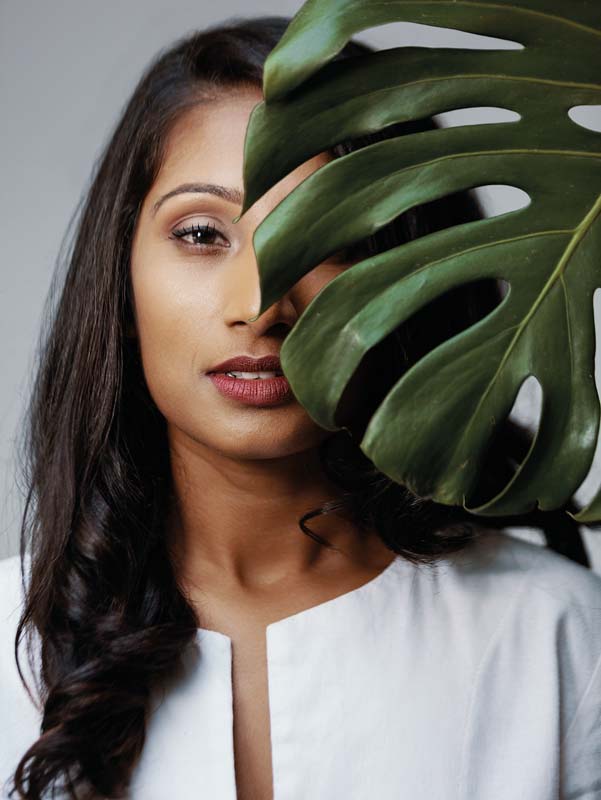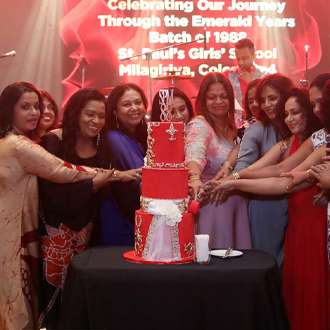




Enamoured by the beauty of flowers and foliage, and the positive impact it has on people, dima sham founded sand concepts which provides services ranging from creating floral arrangements to curating plants for your home.
SAND is a small company that provides a curated selection of houseplants, tropical floral arrangements and various products to enhance your well-being at home. I also offer consultations on how to style your property with plants and homeware and also design events and weddings inspired by the tropics.
I started SAND in early 2017. The core business of SAND is to offer home styling advice on how to bring the greens indoors – how to cohabitate with plants. Sri Lanka has such a rich diversity of plants that can be kept as houseplants if only we make an effort to understand the particularity of each plant. SAND’s expertise lies in knowing what are the most appropriate plants that would thrive in different residential and commercial environments.
The erosion of the earth’s landmasses reduces its minerals and rocks over time to form sand – which would be your short scientific definition of what SAND means. The deeper, more personal definition of why I chose SAND as my brand’s name is because it also happens to be an acronym of my family member’s names. My brother and I lost our parents at quite a young age. Figuratively, parents hold a place as big as “landmasses” in life. Their demise can be compared to landmasses eroding and being reduced to nothing but sand. My workspace is constantly filled with sand too – which works quite well for a plant oriented business.
Plants have such powerful virtues as they can elevate your mood, relax your mind and some are even known to purify the air in a home. You basically bring life into your home. The increasing number of smaller living spaces and decrease in personal green spaces made me want to find a solution to this problem by offering a range of beautifully potted houseplants.
No, I am self taught. I was going to attend a flower school in America but I was compelled to cancel my trip at the last minute. It broke my heart, but I still kept experimenting on my own and learning about techniques through diverse publications. As for plants, reading the encyclopedia and taking online classes really have taught me a lot. It’s such a vast field, I have so much to learn and keep learning every day. My academic background is Public Relations. However, Shirani Jayasuriya of renowned florists Shirohana is the one who taught me everything I needed to know about flowers and floristry. She was my mentor and inspiration even though our creative styles are very different.
In 2014, I was hired at Shirohana to assist with wedding designing. That is when and where I started developing a fascination towards flowers. However, I had always wanted to have my own homeware/ interior décor store. I moved homes quite often and loved beautifying spaces. However nice homeware and furniture in Sri Lanka turned out to be quite expensive. I couldn’t afford it. I found creative ways to beautify spaces with plants instead, which ended up being a more cost effective solution. I started noticing how my mood was elevated after surrounding myself with so much greenery.
I had no fears. Before moving to Sri Lanka 7 years ago, I had been living in Switzerland my whole life. I finished my studies in 2010, jumped from one corporate job to another but kept coming back to Sri Lanka on holiday more often than not. I really saw a potential in the then developing country and had no doubts about taking a risk at age 24 to leave everything behind and move here. I don’t believe in living in fear and have always been quite a risk taker. That’s how you learn and grow. I never had a career laid out before starting SAND. I only found my calling at the age of 28.
I developed my signature style by constantly experimenting with different native flowers and foliage. It took me about 3 years to perfect my signature style.
So far, all my plants are sourced through small growers scattered all over Sri Lanka. My pottery is made through small local potters; my range of soy candles and soaps are also manufactured locally using natural ingredients.
My career highlight is that my style and vibe is now being instantly recognized. It warms my heart to hear people say “that’s a SAND bouquet!”
I only rely on small local growers and the harvest of tropical flowers will always depend on the unpredictable climatic conditions. My bouquets are very seasonal and are only subject to the availability of flowers. We don’t have flower markets like in many other countries, which subsequently limits the range of flowers I can play with. I only work with a range of about 10 different local flowers. We do have many beautiful tropical flowers growing in the wild but they don’t all last long in arrangements and bouquets. I would love to find more time to wander into the wild and forage flowers and foliage myself, which I sometimes do for special occasions.
I look for inspiration all around me. Absolutely everywhere. I love picking clients’ brains to get to know more about them in order to create something unique and personal. I once created an installation for an Indian fashion designer inspired by her childhood memories. Each flower and foliage picked had something to do with her and her brand.
My prediction would be the use of less flowers and more foliage. Moving away from manicured floral arrangements and opting for more wilderness.
Customers often come looking for succulents and cactis perhaps because they are small, cute and trendy. But I offer more of a curated selection of unique looking plants. There is a majestic plant called Taccha Chantrieri more commonly known as “Black Bat Flower” or “Yakka Mal” which used to be so common outside peoples’ homes back in the 70s and 80s. Because it had a black peculiar looking flower resembling a bat, people used to cut it off but nowadays it is considered a rather rare collector’s plant in the West.
My main challenge must be my basic knowledge of Sinhala. At times it has been a real challenge for suppliers to understand me, and vice versa.
The natural habitat of houseplants offered at SAND (except for a few desert plants) is a tropical humid condition. The four key elements to observe in your home before purchasing a plant would be air quality, light, humidity levels and a realistic watering schedule.
In 5 years I see myself wandering around my newly built botanical conservatory. I have been collecting plants and would love to watch them grow in a safe place.
Photographs: You’re My Favorite






